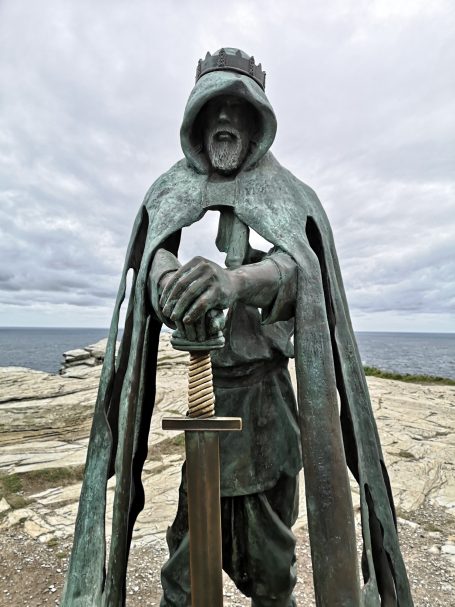Travel Tips: Tintagel Castle, Cornwall
Perched dramatically on Cornwall's rugged coastline, Tintagel Castle evokes a sense of timeless mystique. Its crumbling ruins, clinging to the windswept cliffs, whisper tales of Arthurian legend and medieval might. The site, steeped in history, offers breathtaking panoramic views of the turbulent Atlantic Ocean, where the waves crash against the rocky shores far below.
A visit to Tintagel is more than just a historical tour; it's an immersive experience, a journey into a land of myth and dramatic natural beauty. The echoes of ancient footsteps and the wild, untamed landscape combine to create an unforgettable encounter with Cornwall's captivating past.
History of tintagel castle
Tintagel Castle, perched dramatically on Cornwall's rugged coastline, boasts a history as rich and mythical as the legends it inspires.
While artifacts suggest Roman-era activity, the site truly flourished in the 5th to 7th centuries AD as a prosperous early medieval settlement with strong trade links to the Mediterranean. It was likely a high-status stronghold or even a royal residence of the rulers of Dumnonia (ancient Devon and Cornwall).
Tintagel's enduring fame, however, stems from its powerful association with King Arthur. In the 12th century, Geoffrey of Monmouth famously named it as the place of Arthur's conception in his influential Historia Regum Britanniae, a tale that cemented the castle's place in Arthurian legend.
Inspired by these very legends, Richard, Earl of Cornwall (brother of King Henry III), built the visible medieval castle on the site in the 1230s. This construction, despite the site's lack of strategic military value, was a conscious effort to connect with the mythical past.
Over subsequent centuries, the castle fell into disrepair due exacerbated by coastal erosion. Today, the atmospheric ruins, managed by English Heritage, remain a major visitor attraction, drawing people to explore the tangible remnants of its past and the mythical world of King Arthur.
Planning your visit
- Book in Advance: Tintagel Castle is a popular attraction, especially during peak season. Booking tickets online in advance is highly recommended to avoid long queues and ensure entry.
- Admission: If you are an English Heritage member, entry is free. If not, the admission prices and opening times are accessible via the Tintagel Castle website.
- Dogs: Tintagel Castle is dog-friendly and dogs are welcome everywhere but please note there are lots of steps, cliff edges and nesting birds so please keep them safe on leads.
- Check for Closures and Events: Before you go, check the English Heritage website for any closures or special events that might affect your visit.
- Be Mindful of Crowds: Tintagel Castle can get crowded, especially during peak season. Visit early in the morning or later in the afternoon to avoid the biggest crowds.
- Allow Plenty of Time: Exploring the castle ruins and surrounding areas takes time. Allow at least 2-3 hours to fully appreciate the site. Factor in time to walk down to the beach, and back up again.
- Parking: Tintagel Village has several car parks, which can get very busy, especially in peak season. Parking fees apply, so allow ample time to find a space. We recommend giving yourself at least half an an hour to walk from the village car parks to the footbridge entrance, where your timed ticket slot begins
Check the Tides & Weather
- Tintagel Castle is a coastal site, and access to certain areas, like the beach and Merlin's Cave, is tide-dependent. Check tide times before your visit.
- Cornwall's weather can be unpredictable. Be prepared for wind, rain, and sunshine. Layers are essential.
Choose your footwear wisely
- The site involves a lot of walking, often on uneven and steep terrain. Sturdy, comfortable shoes are a must.
- Be prepared for many steps.
Accessibility @ Tintagel castle
- Wheelchair Access: Limited, but 140 steep steps can be avoided by using the bridge for step-free access across the site.
- Transport Service: An interim transport service is available from the village to the castle, which can accommodate fold-up wheelchairs. A fully accessible solution is planned for later in the year.
- Resting Points: Some resting points are available on site.
Last Updated: 31 May '25



